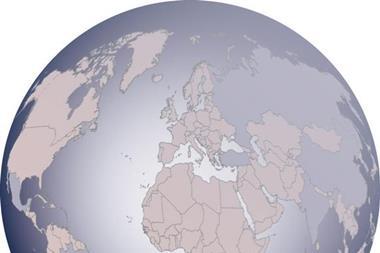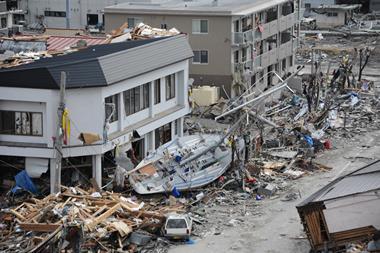The natural disaster in Japan has shown just how vital preparation and planning is, but for complete cover, companies and organisations must expect the unexpected
E ven for a country famously well prepared for natural disasters, it was the nightmare scenario: at 14:46 on 11 March, a massive, magnitude 9 earthquake barreled through the seabed off Japan’s north-east coast, creating a tsunami that devastated the coastal zone. Among the resulting chaos, there was one question that became more and more urgent: what about the nuclear power stations?
Despite initial reassurances, within hours a state of emergency was declared at the Fukushima nuclear facility, and suddenly the global media was locked on. But despite everything that has happened at the Fukushima nuclear complex, there are reasons to be reassured; in many ways the reactors did exactly what they were designed to do.
When the quake hit, all the operating reactors ‘tripped’, safely halting the nuclear fission process. But because the fuel continued to produce large amounts of heat, the battle was on the keep it cool and avoid a catastrophic meltdown. This has been far from easy, and a month after the quake, on 12 April, the Japanese authorities raised the threat level to seven – the same status as Chernobyl.
Damage control
Despite the seriousness of the evolving crisis, however, leaks seem to have been minimal, with only the equivalent of 10% of the radioactive material released during the Ukrainian disaster in 1986 being detected in Japan.
In fact, because the disaster was so massive and the leaks – at least so far – have had minimal health and environmental impacts, the prominent UK journalist and activist George Monbiot wrote in The Guardian recently that the disaster has convinced him nuclear power is the safest way to combat climate change.
But his response was unusual and the situation is still developing. Initially, by far the most common reaction was panic, with embassies issuing warnings and hundreds of ex-pats fleeing Tokyo. There were reports of private jets being hired by bankers who didn’t care how much they cost, they just wanted out.
“I think a lot of the reaction we saw initially in the aftermath will be reconsidered when the – literal and metaphorical – smoke clears,” Exclusive Analysis risk analyst Alexia Ash says.
“We will see what we are seeing already in places like Iran, where they first said they would be reconsidering nuclear power and now seem to be moving forward with it again.
“[In Fukushima] we had a situation where there were six reactors built in the 1970s and they have withstood the most powerful earthquake to hit Japan for decades. That is a reason to argue that nuclear power is safer than we thought, especially if we continue to see no serious health impacts.”
What Fukushima has shown us is that sometimes averting a disaster is not enough. The information war must be won and the gap closed between the public consciousness of real and perceived risk.
“People are frightened of anything they can’t see, or that they can’t understand,” Ash says. “One of the problems [at Fukushima] was lack of information. A lot of the people who could have provided information were very busy dealing with the situation at the reactors … If there is a lesson, it is that there really needs to be a dedicated team in place to provide up-to-date information to avoid panic.”
Ultimately, though, the new uncertainty around nuclear power may have a longer-term impact on Japan than the problems at the plant.
Looking ahead
According to Exclusive Analysis, Japan’s heavy dependence on nuclear power, its total lack of hydrocarbon resources and the strength of the nuclear lobby all point against a wholesale move away from nuclear power, which may have a knock-on effect on the global price of other fuels.
“Although the situation does remain serious at Fukushima, the problems in power generation [created by the nuclear shutdown] could be more of a problem,” Ash says.
But other problems caused by the earthquake have been all too ‘real’. Establishing a 12-mile exclusion zone around Fukushima, along with widespread quake and tsunami damage – over 80,000 buildings have been damaged and nearly 5,000 destroyed – has caused the widespread shutdown of large parts of Japan, something that brings lessons for all risk managers.
“This really was a wide-area incident; a huge number of interconnecting aspects of society were affected and that’s something we need to prepare for,” Airmic chairman John Hurrell says.
“In the UK we’ve seen similar, if far less serious, events in recent years and we should take that on board when we look at risk. We’ve had large-scale floods, we had the Bunsfield fire and two winters where large parts of the country have been iced out. Who knows what’s on the horizon? There could be a pandemic, more floods.
“The core point to take away is that each time any of these events has occurred, it has exceeded our planning by some order of magnitude. It’s time to think the unthinkable and see where that leaves us.”
Japan is widely considered one of the most well-prepared and methodical societies on Earth, and yet it could not prepare for the unexpected events of 11 March.
“We need to remember that the good data we have about world events is only 100, maybe 200 years old, and that’s nothing in terms of the lifespan of the Earth,” Hurrell says.
“How many organisations plan for a situation where it isn’t only their business affected? What we are seeing are situations where everything is out. Japan is revealing just how complex modern supply lines are. A lot of businesses didn’t even know that they had a connection with Japan somewhere down the line until it went down. Very few people are looking at more than three degrees of separation.”
Ultimately, perhaps, businesses need to be robust. “The assumption has been that in many cases everything has to be working perfectly for things to work,” Ash says.
“What happens, say, when your staff can’t get to work because there is no transport?” Hurrell asks. “When the schools are shut and they have to stay at home with their kids? As soon as you widen the circle you’re looking at, things get very complex.
“We also need to ask: how relevant is our insurance? How will it protect us if everything is out? Can it cope? What if everyone else is claiming? What happens when everything is up in the air?”
You can always be more prepared
The main lesson from the ongoing situation in Japan is not so much ‘be prepared’, as ‘be more prepared’.
All businesses have some contingencies in place to survive upheaval of various kinds. But recently, entirely unpredictable events such as those in Japan have clearly demonstrated that these may not be enough, and shrewd risk managers should be looking again at potential vulnerabilities right across their supply chains, human resources, finance, transport and technology.
Nuclear power operators are obsessed with safety and yet at Fukushima emergency cooling pumps and generators repeatedly failed. A fire engine brought in to help ran out of fuel. Ask yourself: are your back-ups enough?
In the teeth of a problem, Fukushima has shown that good communication is key, both internally to keep coherence and focus within the business, and externally to ensure the public has clear, accurate information about what is happening. This has multiple benefits:
• minimising the spread of fear and panic, which can dramatically exacerbate problems;
• enrolling staff and public support in any mitigation strategies; and
• reputation management.
If possible, a dedicated team should be available to manage communications, deal with public and media questions and have the authority and access to get whatever information they need. It is essential this team is present across social media as well, as Japan has shown how sites like Twitter and Facebook were key in disseminating information.



















